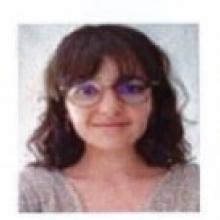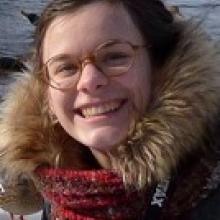Evolutionary Genetics of Interactions Group
Members

Ingénieur d'études CDD
CNRS

Maître de conférences
UCBL
Tel: 04 72 43 29 16
Post-doc
CNRS

Chargé de recherche
CNRS
Tel: 33 04 72 43 29 12

Maîtresse de conférence universitaire
UCBL
Tel: 04 72 43 29 16

Professeur des universités
UCBL

Doctorante
CNRS
Tel: 04 72 44 81 42

Chargée de recherche
CNRS
Tel: 33 04 72 44 81 01

Doctorante
INSA
Tel: 04 72 44 81 42

Maîtresse de conférences
UCBL
Tel: 04 72 43 29 10

Doctorante
UCBL
Tel: 04 72 44 81 42
Doctorante
UCBL
Doctorante
UCBL
Assistante ingénieure CDD
UCBL

Maître de conférence universitaire
UCBL
Tel: 33 04 72 44 81 01

Directeur de recherche
CNRS
Tel: 33 04 72 43 19 21

Professeure des universités
UCBL
Tel: 33 04 72 44 82 16
Professeur des universités
VetAgro-Sup
Tel: 33 04 78 87 27 02
Living systems are made up of a multitude of interlocking levels of organization, involving cooperation and conflict. Cooperation and the selection of systems operating in a coordinated manner has allowed so-called "major" evolutionary transitions, towards new scales of individuality, such as the eukaryotic cell. Nevertheless, natural selection continues to operate at all scales, generating possible evolutionary conflicts between the different components of the individual.
Our research is in line with this perspective, and aims to better understand the nature and evolutionary implications of the interactions between the multiple components of organisms, from genes to symbiotic bacteria, viruses and transposable elements. We also explore the impact of these interactions on the dynamics of genetic information, through horizontal transfer, or on genetic innovation and adaptation, through domestication. Our research, mainly experimental, but also theoretical, is implemented on arthropod models, and is mainly related to genetics and evolutionary genomics.
The team is structured along two main axis:
- Intragenomic interactions: transposable elements (resp. Marie Fablet)
Ex1: The evolutionary dynamics of transposable elements (TEs) in genomes, in relation to their natural variability. Our models include natural populations of Drosophila melanogaster and D. simulans, as well as species of agronomic or societal interest, such as the invasive species D. suzukii or the tiger mosquito Aedes albopictus.
Ex2: Interactions between ET control and anti-viral immunity. We are studying the molecular mechanisms of RNA interference at the origin of the entanglement of these two processes, as well as the co-evolutionary implications, using experimental infections of different viruses on several Drosophila lines.
People involved : CV, MB, MF
- Symbiosis, the driving force of evolution (resp. Natacha Kremer)
Ex1 : Certain symbiotic bacteria provide metabolic capacities that the insect lacks. We are analysing these interactions in haematophagous insects (bedbugs, ticks) and phytophagous insects (the whitefly Bemisia tabaci) using approaches combining phenotype analysis, genetics, physiology and metabolomics.
Ex2: Parasitoid insects have domesticated viral genes enabling them to bypass the immune responses of their hosts. We are studying the frequency and adaptive significance of these events and, more generally, looking into the factors structuring horizontal transfers in host-parasitoid communities.
People involved: NK, LM, LZ, JMD, JV, FV, SC
Publications
Display of 301 to 330 publications on 392 in total
The effects of multiple infections on the expression and evolution of virulence in a daphnia-endoparasite system
Evolution - International Journal of Organic Evolution . 62-7 : 1700-1711
Journal article
see the publicationThe evolution of retrotransposon regulatory regions and its consequences on the Drosophila melanogaster and Homo sapiens host genomes
Gene . 390 ( 1-2 ) : 84-91
Journal article
see the publicationBehavioural manipulation of insect parasitoids by a maternally inherited virus: ecological consequences and potential applications for biological control
Entomological Research . 37 : A11-A73
Journal article
see the publicationEvolution and invasion dynamics of multiple infections with Wolbachia investigated using matrix based models.
Journal of Theoretical Biology . 245 : 197-209
Journal article
see the publicationParasitic inhibition of cell death facilitates symbiosis.
Proceedings of the National Academy of Sciences of the United States of America . 104 ( 1 ) : 213-5
Journal article
see the publicationTomato yellow leaf curl virus transmission efficacy is determined by symbiotic bacteria in the vector the sweet potato whitefly Bemisia tabaci
Entomological Research . 37(1) : A42-A43
Journal article
see the publicationA Survey of the Bacteriophage WO in the Endosymbiotic Bacteria Wolbachia
Molecular Biology and Evolution . 24 : 427-435
Journal article
see the publicationVariable-Number Tandem Repeats as Molecular Markers for Biotypes of Pasteuria ramosa in Daphnia spp
Applied and Environmental Microbiology . 73 : 3715-3718
Journal article
see the publicationEvolutionary Pathways of the tirant LTR Retrotransposon in the Drosophila melanogaster Subgroup of Species
Journal of Molecular Evolution . 64 : 438-447
Journal article
see the publicationThe effects of age at mating on female life-history traits in a seed beetle
Behavioral Ecology . 18 : 551-555
Journal article
see the publicationThe Sublethal Effects of Pesticides on Beneficial Arthropods
Annual Review of Entomology . 52 : 81-106
Journal article
see the publicationInteraction between host genotype and environmental conditions affects bacterial density in Wolbachia symbiosis
Biology Letters . 3 : 210-213
Journal article
see the publicationReverse Arrangement of rRNA Subunits in the Microsporidium Glugoides intestinalis
Journal of Eukaryotic Microbiology . 54 : 83-85
Journal article
see the publicationInsertion polymorphism of transposable elements and population structure of Anopheles gambiae M and S molecular forms in Cameroon
Molecular Ecology . 16 : 441-452
Journal article
see the publicationMitspieler der Evolution
Spektrum der Wissenschaft . S44 : 44-49
Journal article
see the publicationArtifical transfer and morphological description of virus particles associated with superparasitism behaviour in a parasitoid wasp.
Journal of Insect Physiology . 52 ( 11-12 ) : 1202-1212
Journal article
see the publicationSuperparasitism evolution: adaptation or manipulation?
The American Naturalist . 167 ( 1 ) : E1-E22
DOI: 10.1086/498398
Journal article
see the publicationThe virus infecting the parasitoid Leptopilina boulardi exerts a specific action on superparasitism behaviour
Parasitology . 132 : 747-756
Journal article
see the publicationOngoing loss of the tirant transposable element in natural populations of Drosophila simulans
Gene . 375 : 54-62
Journal article
see the publicationDifferences in genome size between closely related species: the Drosophila melanogaster species subgroup.
Molecular Biology and Evolution . 23 ( 1 ) : 162-7
Journal article
see the publicationAgeing and the evolution of female resistance to remating in seed beetles
Biology Letters . 2 : 62-64
Journal article
see the publicationUnicoloniality recognition and genetic differentiation in a native Formica ant
Journal of Evolutionary Biology . 19 : 2031-2039
Journal article
see the publicationA Newly Discovered Virus Manipulates Superparasitism Behavior in a Parasitoid Wasp
Insect Symbiosis . 2 : 119-139
Book chapter
see the publicationEffect of temperature on Wolbachia density and impact on cytoplasmic incompatibility
Parasitology . 132 : 49-56
Journal article
see the publicationDifferences in Genome Size Between Closely Related Species : The Drosophila melanogaster Species Subgroup
Molecular Biology and Evolution . 23 : 162-167
Journal article
see the publicationDifferences in genom size between closely related species : the drosophila melanogaster species subgroup.
Molecular Biology and Evolution . ( 23 ) : 162-167
Journal article
see the publicationIncrease of the Behavioral Response to Kairomones by the Parasitoid Wasp Leptopilina heterotoma Surviving Insecticides
Archives of Environmental Contamination and Toxicology . 49 : 186-191
Journal article
see the publicationEvaluation des effets sublétaux d'insecticides sur des insectes auxiliaires entomophages.
Programme national d'écotoxicologie: avancées récentes .
Book chapter
see the publicationMultiple infections and diversity of cytoplasmic incompatibility in a haplodiploid species
Heredity . 94 : 187-192
Journal article
see the publication